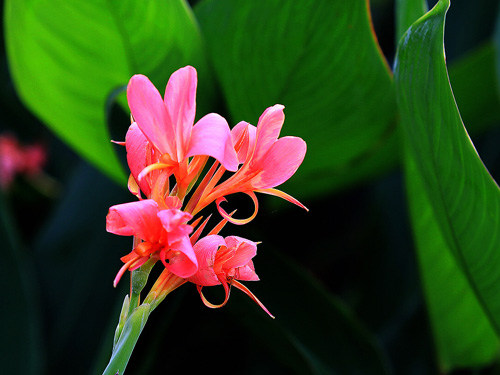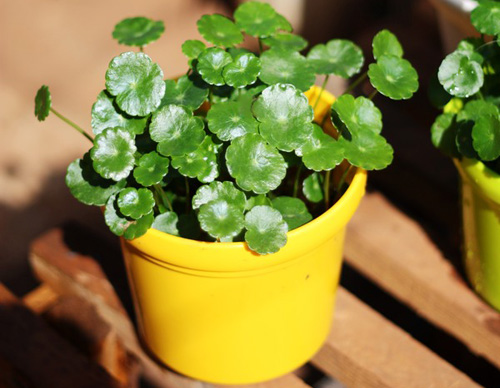The Culture method of Artemisia angustifolia
Pickled vegetables (herbs)
Scientific name: nymphoides peltatum
Family and genus: Gentianaceae
Morphological features: perennial floating herbs. Long branches prostrate on the bottom of the water, and short branches grow from the nodes of the long branches. Leaves ovate, base parted into heart-shaped. Umbels born in leaf axils, flowers large and conspicuous, Corolla yellow, 5-parted, lobes margin whisker-shaped, Corolla lobes with-obvious wrinkles in the middle, lobes hairy on both sides of □.
Ecological habits: like light, cold resistance; like fertile soil, suitable for shallow water or non-flowing pool. Very adaptable.
Cultivation and management: during the growing period, weeds and debris should be removed in time, the water body should be kept clean, and fertilizer should be applied twice combined with weeding to promote the growth and development of the plant and improve its ornamental effect. Overwintering treatment should be carried out in winter in the north. The main pest is aphid, and the control effect can be achieved by spraying with 1000 times of dimethoate emulsion.
Florescence: from May to August.
Flower words: tenderness and favor
Garden uses: green leaves in midsummer, quite out of the water, yellow, unique style. The water surface is green.
Medicinal efficacy: sweating through rash; diuresis; heat-clearing and detoxification.

The method of culturing Brassica campestris and matters needing attention in the process of culturing
Hogwash, also known as Lancai, is an aquatic herb. Like still water, the leaves are round or oval, floating on the water surface. So, do you want to know what are the planting techniques for pickled vegetables? Do you want to raise vegetables well? Today, the editor, next we will come to know this kind of plant.
How to pronounce pickled vegetables
Yes, this is the "unevenly long and short vegetables that the girl picks around" in the Book of songs. The word "xylene ng" is an aquatic herb of the family Gentianaceae. The leaves of Artemisia angustifolia are round or oval, floating on the water surface, and the leaves are much branched. Yellow florets bloom from May to August every year.
The method of culturing Brassica juncea
If you like aquatic plants, you can find a large vat or a spacious basin and plant a pot of wild vegetables that you can watch and eat.
Selection of flowerpots
Like planting water lilies, you can choose a deeper outline, the water depth is about 40 cm, at least not less than 10 cm. When planting, you should put a small amount of river pond mud in the container to fix the root.
Sunshine requirement
The maintenance of pickled vegetables is relatively extensive, usually ensure that there is plenty of sunshine, most families will put them in the courtyard to maintain, normal sunlight can, do not need shading can grow very well.
Moisture requirement
Aquaculture must not be short of water, otherwise the leaves will dry up and water should be often poured into the container. Remove the sundries in the water in time during the growth period and keep the water clean.
In winter, it is necessary to ensure sufficient water in the container and put it in the sunny part of the indoor backlight to survive the winter safely.
Matters needing attention in aquaculture of Chinese cabbage
Heat preservation
The temperature is relatively low in winter in the north, although it has a certain cold tolerance, but it is lower than-10 ℃, it can not turn green and grow normally in spring. So after winter, move the flowerpot to a warm place, or cover it with plastic film to keep warm.
Weeding and topdressing
During the growth period, topdressing 1-2 times, not too frequently, in order to promote the growth and development of the plant. In addition, it is necessary to control aphids in time, do a good job of ventilation, and deal with aphids in time.
This is what I know about aquatic plants today. I hope it will be helpful for you to read this article. If you want to know more about aquatic flowers, please continue to pay attention to our succulent flower beds. We will provide you with more relevant content for the first time!
- Prev

Cultivation and management methods of aquatic canna (flower and leaf canna)
Aquatic canna (Canna mosaic) scientific name: cannaglauca alias: Florida Canna: Canna genus of Canna family: morphological characteristics: perennial root herbs, dwarf, plant height 50-80 cm. With rhizomatous tubers, leaves broadly elliptic, alternate
- Next

Cultivation and management methods of Lentinus edodes (Lentinus edodes, coriander)
Lentinus edodes grass (copper money grass, South American coriander) scientific name: hydrocotylevulgaris alias: common coriander, money lotus, water money, copper money grass morphological characteristics: perennial water or wet herbs, with trailing, 5 centimeters high. The nodes often take root, and the top of the stem is brown.
Related
- Fuxing push coffee new agricultural production and marketing class: lack of small-scale processing plants
- Jujube rice field leisure farm deep ploughing Yilan for five years to create a space for organic food and play
- Nongyu Farm-A trial of organic papaya for brave women with advanced technology
- Four points for attention in the prevention and control of diseases and insect pests of edible fungi
- How to add nutrient solution to Edible Fungi
- Is there any good way to control edible fungus mites?
- Open Inoculation Technology of Edible Fungi
- Is there any clever way to use fertilizer for edible fungus in winter?
- What agents are used to kill the pathogens of edible fungi in the mushroom shed?
- Rapid drying of Edible Fungi

